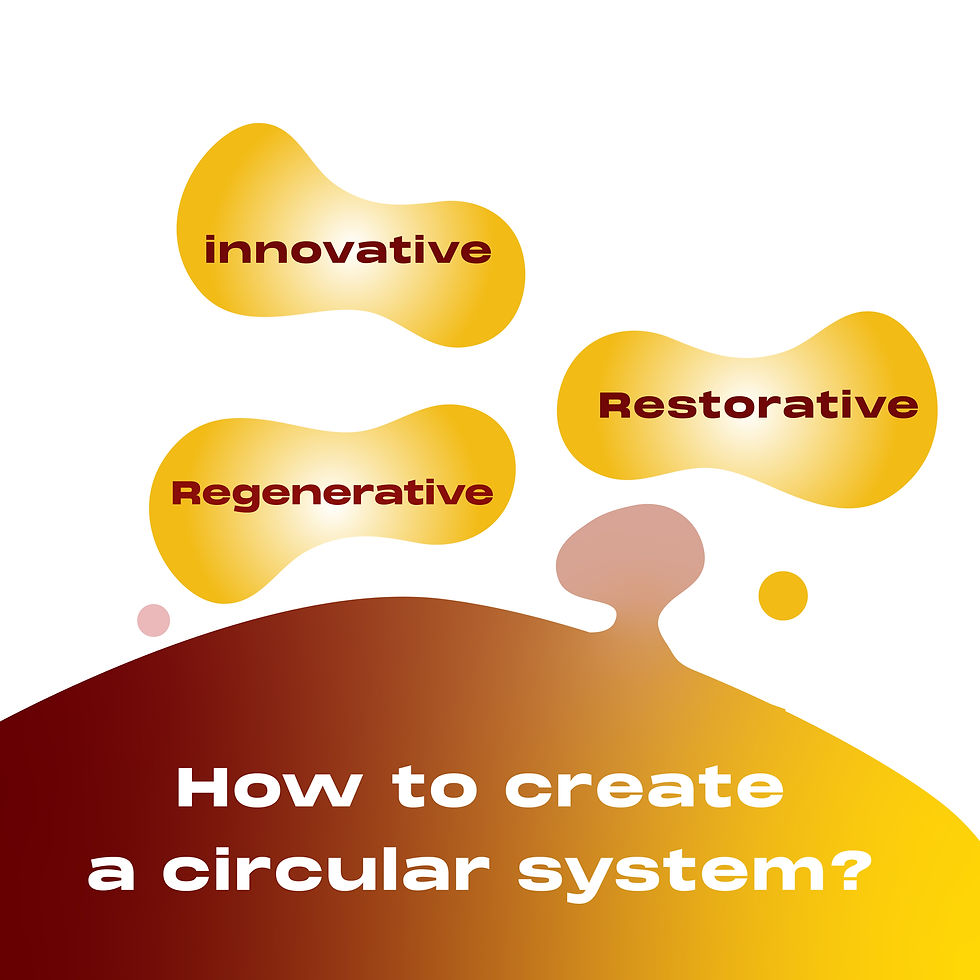- DANSIC

- Mar 12, 2021
- 3 min read
This year at DANSIC, we’ve been talking a lot about the importance of waste management, the reduction of plastic use, and ways to popularise these topics. Our discussions often revolve around the concept of the circular economy, also referred to as circularity. It is a framework for designing an economy that is restorative and regenerative, in which economic activity builds and rebuilds overall system health. Ultimately, it’s an approach aimed at creating value and prosperity through innovative design. It can be done by extending product lifespan and by relocation waste from the end of a supply chain to its beginning, creating a circular system.

Its foundation lies in the idea that through the use of creativity and innovation, we can re-think and re-design how our economic system functions, and shift our perspective and methods away from a linear approach. The notion itself has deep historical and philosophical roots, synthesising various schools of thought: the functional service economy (performance economy) of Walter Stahel; the Cradle to Cradle design philosophy of William McDonough and Michael Braungart; biomimicry as articulated by Janine Benyus; the industrial ecology of Reid Lifset and Thomas Graedel; natural capitalism by Amory and Hunter Lovins and Paul Hawken; and the blue economy systems approach described by Gunter Pauli.
If you prefer visuals over text, here’s a quick animation to give you a brief overview:
A circular economic system is underpinned by a transition to renewable energy sources, which could represent long-term resilience whilst generating new business and economic opportunities as well as environmental and social benefits.
The three underlying principles of the circular economy are:
Reducing waste and pollution through innovative design
Keeping using and re-using products and materials
Regenerating natural systems
Whilst these are applicable on a systemic level, there is plenty of initiatives we can take up in our own lives to contribute to a positive change. Imagine a plastic water bottle that you may buy every week when out and about. Have you ever thought about the 450 years it will take for it to decompose in a landfill when you’re sipping on the sparking water? Next time you throw the bottle in the bin, try visualising that. It can be useful in understanding the linear take-make-waste model, and how you could help transition towards a more circular recycle-reuse-use-resue-remake approach.
If you’re keen on implementing a couple of everyday practices that support circularity, here’s a checklist for inspiration:
Understand rubbish rules
There might be certain recycling rules in place in the area you live, so make sure you’re familiar with what type of waste you can mix, which labels or lids you have to take off or leave on etc.
Avoid impulse shopping
As you have probably heard it, the most sustainable clothes you can wear are the ones you already own. Remember that!
Give away what you don’t need
One man’s waste is another man’s treasure. Instead of getting rid of old clothes, items, tools you no longer need, see if you can gift it to someone else who could make good use of it.
Be prepared
Water bottles, shopping bags, coffee cups, cutlery.. try to think in advance when you’ll need these and bring them with you instead of buying disposable ones each time.
Use less packaging
This applies both to the items you purchase in shops and gifts you would normally wrap in layers of pretty but disposable layers. Check if there are a zero-waste shops you can access, and possibly mix up parts of your shopping routine.
We hope you found some inspiration in this article and possibly some motivation to implement some of the ideas from above. Remember, one person may not make a significant difference but being the change you want to see in the world can be extremely powerful.







